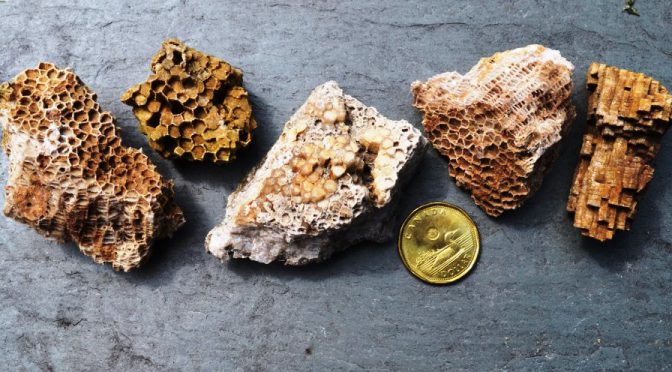Generally, when Wayne County Gem and Mineral Club packs up the buckets, hammers, passports and bug repellent to head north of the border we are after minerals in the Precambrian rocks of the Grenville Geological Province. But recently we have been able to make an annual stop in younger rocks to collect fossils in Ordovician limestones in the Eganville area of eastern Ontario. Specifically we visit the Haley Quarry in Douglas, Ontario and search the Upper Ordovician Verulam and Lindsey Formations of the Ottawa Group. We did so again this year on Wednesday July 19th.
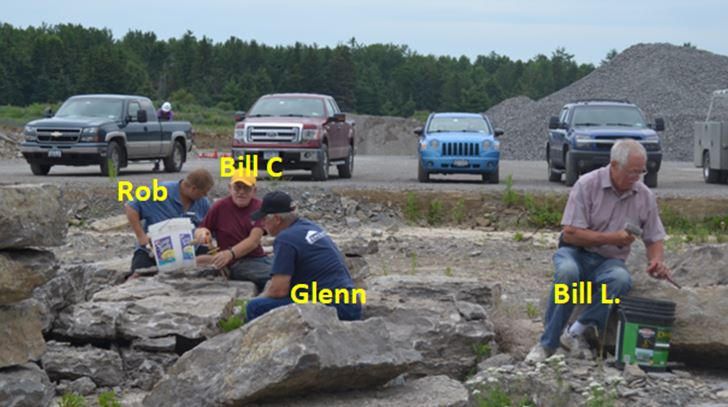
Haley quarry provides landscape blocks and construction stone to the greater Eganville and Renfrew area. But we seek other treasures. The prize we seek are large cephalopods and Isotelus trilobites. Neither is particularly abundant, but we have found both. There are also aesthetically challenged basketball-sized sponges hidden among and within the blocks of rock awaiting landscape use. And worms, yes worms, or should I say worm burrows, trace fossils indicating the pathways worms followed within the carbonate mud.
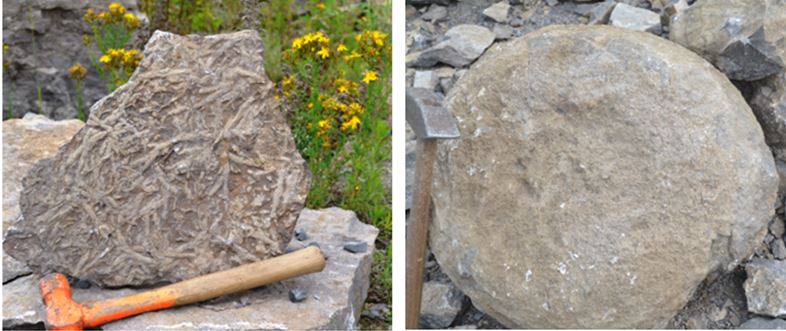
But that is not all. The rocks in the upper section of the quarry are riddled with tabulate coral ranging in size from baseballs to colonies the size of watermelon. Some of the individual corallites contain recrystallized calcite, but many are hollow. Whether viewing the colony from the top or the side the morphology makes for an appealing piece. Even when broken (or perhaps best when broken) the thousands upon thousands of individual chambers are displayed. A variable amount of iron staining only enhances the appearance.
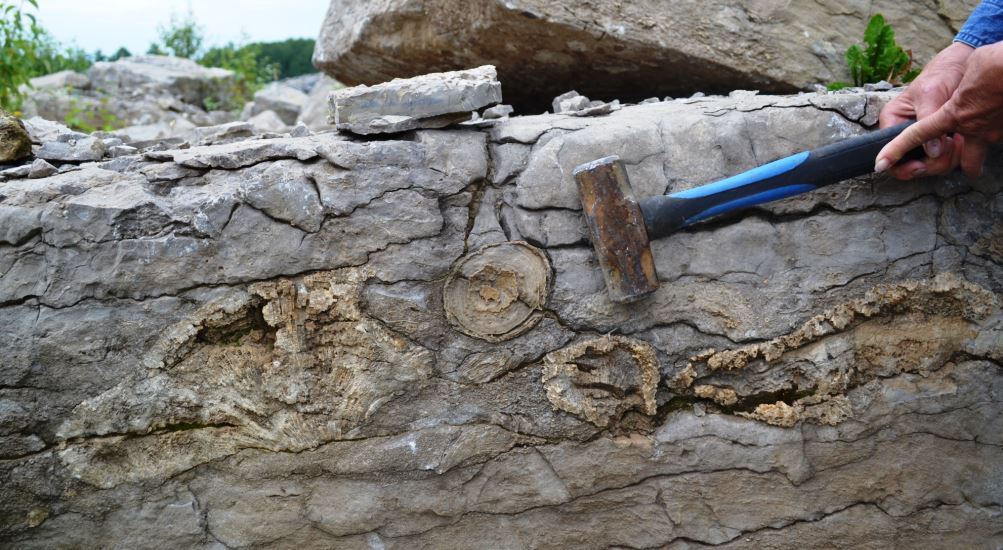
The tabulate corals from Haley Quarry certainly resemble the Favosites corals of the Devonian of New York. However, they predate the massive Ordovician-Silurian extinction event that eliminated over 60% of all invertebrate species and was particularly hard on corals (Paselk, 1998), so I sought confirmation.
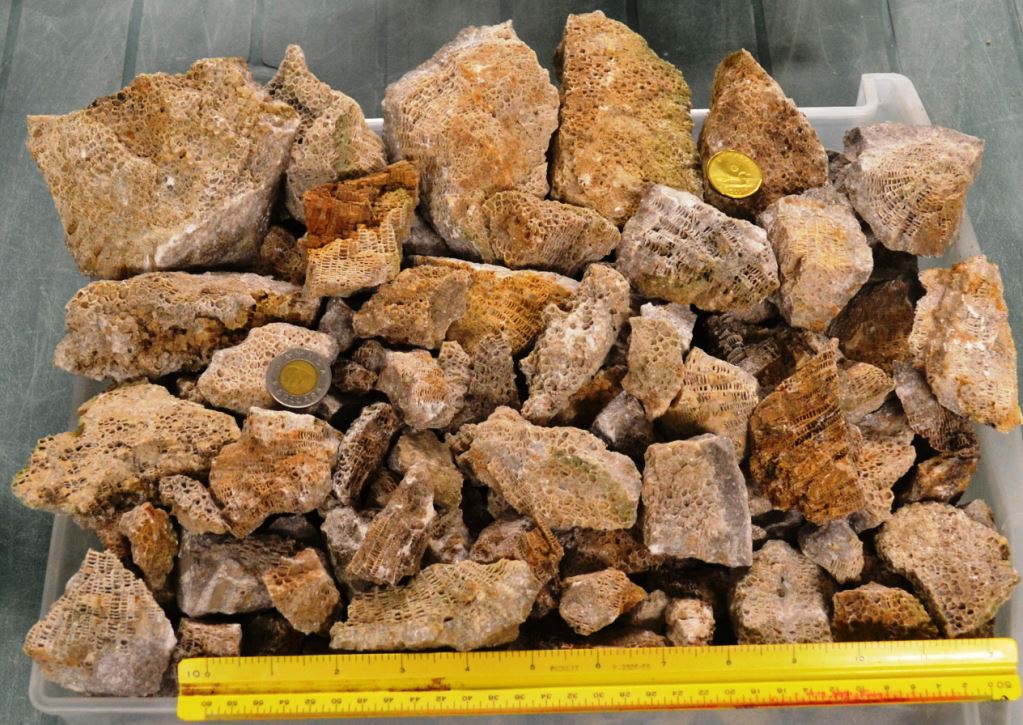
Unfortunately I have not yet found any reference unequivocably identifying the genus of the Ottawa Group corals, but I did find three references to similar appearing Ordovician tabulate corals, each assigned to the genus Foerstephyllum. Paselk (1998) depicts a specimen remarkably similar to the Haley Quarry specimens and the Digital Atlas of Ordovican Life describes the species from sites in Kentucky and Ohio (see below). Cameron et. al. (1972) list Foerstephyllum halle as part of the faunal assemblage in the Upper Devonian Trenton Group of New York. Maybe someone reading this can provide an assist? And maybe we should seek a location to collect in the Trenton Group in New York?

So, should we label our corals Foerstephyllum or Favosites? Or just stick with honeycomb coral!
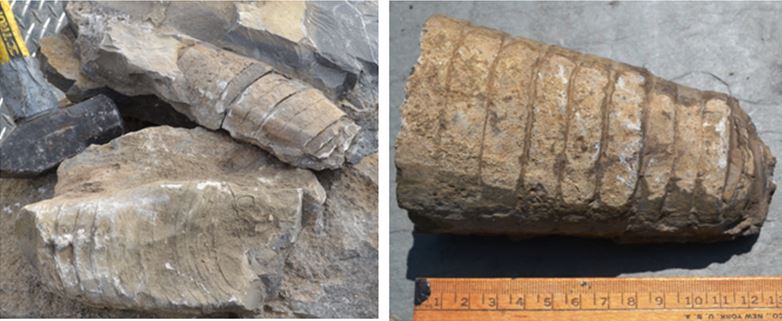
References:
Cameron, B., Mangion, S., and Titus, R., 1972, Sedimentary Environments and Biostratigraphy of the Transgressive Early Trentonian Sea in Central and Northwestern New York, NYSGA Guidebook, H1-H39
Paselk, R., 1998, Life Through Time Exhibit: Ordovician, Humboldt State University Natural History Museum webpage
The Digital Atlas of Ordovician Life
